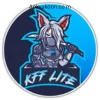Drone View ML Download Latest Version
Description
Drone view machine learning has found its perfect partner thousands of feet above ground. Drones equipped with ML capabilities are transforming industries from agriculture to emergency response, offering unprecedented insights from aerial perspectives. This technology combines the mobility of unmanned aerial vehicles with the analytical power of artificial intelligence, creating solutions that were impossible just a few years ago.
The integration of machine learning with drone technology represents a significant leap forward in how we collect, process, and interpret aerial data. Unlike traditional drones that simply capture footage, ML-powered drones can analyze what they see in real-time, making autonomous decisions and providing actionable insights immediately.
This convergence is reshaping multiple sectors. Farmers use these systems to monitor crop health and optimize irrigation. Construction companies deploy them for site surveying and safety monitoring. Emergency responders rely on them for search and rescue operations. The applications seem limitless, and the technology continues to evolve rapidly.
Understanding Drone View Machine Learning
Drone view machine learning refers to the application of AI algorithms to analyze and interpret data collected from aerial perspectives. This technology processes visual information captured by drone-mounted cameras, sensors, and other equipment to identify patterns, objects, and anomalies that would be difficult or impossible for humans to detect manually.
The system works by training neural networks on vast datasets of aerial imagery. These networks learn to recognize specific features, whether that’s identifying diseased crops, detecting structural damage in buildings, or locating missing persons in wilderness areas. The more data these systems process, the more accurate their predictions become.
What sets this technology apart is its ability to operate in real-time. Traditional aerial surveying required capturing images, returning to base, and then analyzing the data over hours or days. ML-powered drones can process information as they fly, enabling immediate responses to critical situations.
Key Features of Drone View ML Systems
Real-Time Object Detection and Classification
Modern drone ML systems excel at identifying and categorizing objects within their field of view. They can distinguish between vehicles, people, buildings, vegetation types, and infrastructure elements with remarkable accuracy. This capability proves invaluable for applications like traffic monitoring, wildlife conservation, and urban planning.
Automated Flight Path Optimization
Drone view machine learning algorithms can analyze terrain, weather conditions, and mission objectives to determine optimal flight paths. This feature reduces battery consumption, improves data collection efficiency, and enhances safety by avoiding obstacles and hazardous conditions automatically.
Predictive Analytics
Advanced systems don’t just observe current conditions—they predict future scenarios. In agriculture, this might mean forecasting crop yields based on current growth patterns. In infrastructure monitoring, it could involve predicting when maintenance will be needed based on observed wear patterns.
Edge Computing Capabilities
Many modern drone ML systems process data directly on the drone itself, rather than transmitting everything to ground-based servers. This edge computing approach reduces latency, conserves bandwidth, and enables operation in areas with limited connectivity.
Multi-Sensor Data Fusion
These systems combine data from various sensors—RGB cameras, thermal imaging, LiDAR, and multispectral sensors—to create comprehensive situational awareness. This multi-modal approach provides richer insights than any single sensor could deliver alone.
Applications Across Industries
Agriculture and Precision Farming
Farmers leverage drone ML technology for crop monitoring, pest detection, and yield optimization. The systems can identify stressed plants before visible symptoms appear, enabling targeted interventions that save both crops and resources. Precision agriculture applications have shown yield improvements of 10-20% while reducing pesticide and fertilizer usage.
Construction and Infrastructure
Construction companies use these systems for site surveying, progress monitoring, and safety compliance. ML algorithms can detect safety violations, monitor worker movements in hazardous areas, and track construction progress against planned timelines. Infrastructure inspection becomes more efficient and safer when drones can identify potential issues without putting human inspectors at risk.
Emergency Response and Public Safety
First responders deploy drone ML systems for search and rescue operations, disaster assessment, and crowd monitoring. These tools can locate missing persons using thermal imaging, assess structural damage after natural disasters, and coordinate emergency response efforts more effectively.
Environmental Monitoring
Environmental scientists use drone ML for wildlife tracking, pollution monitoring, and conservation efforts. The technology can count animal populations, monitor deforestation, track oil spills, and assess ecosystem health with unprecedented precision and coverage.
How to Download and Get Started
Getting started with drone ML technology requires choosing the right platform for your needs. Several software solutions offer varying levels of complexity and capability.
Begin by assessing your specific requirements. Consider factors like the type of analysis you need, your technical expertise level, and budget constraints. Some platforms cater to beginners with user-friendly interfaces, while others target experienced developers who want to build custom solutions.
Most drone ML platforms offer free trial versions or starter packages. These allow you to explore the technology without significant upfront investment. Download options typically include desktop applications, mobile apps, and cloud-based solutions that can be accessed through web browsers.
Installation processes vary by platform, but most follow standard software installation procedures. Ensure your hardware meets the minimum system requirements, particularly for processing power and graphics capabilities, as ML applications can be resource-intensive.
After installation, most platforms provide tutorials and sample datasets to help you understand the workflow. Take advantage of these resources to familiarize yourself with the interface and capabilities before working with your own data.
Conclusion For Drone View ML
The fusion of machine learning and drone technology represents just the beginning of a transformation in how we observe and interact with our world. As algorithms become more sophisticated and hardware becomes more capable, we can expect even more innovative applications to emerge.
Start exploring drone ML technology today by identifying a specific use case within your field or area of interest. Download a trial version of available software, experiment with sample datasets, and consider how this technology might enhance your current workflows. The sky truly is no longer the limit when machine learning takes flight. For more apps visit this site Apksukoon.com
Frequently Asked Questions
Most drone ML applications require a computer with a dedicated graphics card, at least 8GB of RAM, and sufficient storage space for datasets. Some cloud-based solutions can run on less powerful hardware since processing occurs on remote servers. Check specific system requirements for your chosen platform.
Compatibility varies by software platform and drone model. Many solutions work with popular consumer and commercial drones from manufacturers like DJI, Parrot, and Autel. Some platforms are hardware-agnostic and can process data from any drone, while others require specific models or modifications.
Accuracy depends on factors like data quality, training datasets, and specific applications. Well-trained systems typically achieve 85-95% accuracy for object detection tasks. Accuracy improves over time as systems process more data and algorithms are refined.
Not necessarily. Many platforms offer user-friendly interfaces that don’t require coding skills. However, advanced customization and development of specialized applications may require programming knowledge in languages like Python or R.
Drone operations must comply with local aviation regulations, which vary by country and region. Many jurisdictions require pilot licenses for commercial drone operations. Additionally, consider privacy laws when capturing and analyzing imagery, especially in populated areas.
Pricing varies widely, from free open-source solutions to enterprise packages costing thousands of dollars annually. Many platforms offer tiered pricing based on features and usage levels. Factor in costs for hardware, training, and potential consulting services when budgeting.
Download links
How to install Drone View ML Download Latest Version APK?
1. Tap the downloaded Drone View ML Download Latest Version APK file.
2. Touch install.
3. Follow the steps on the screen.





